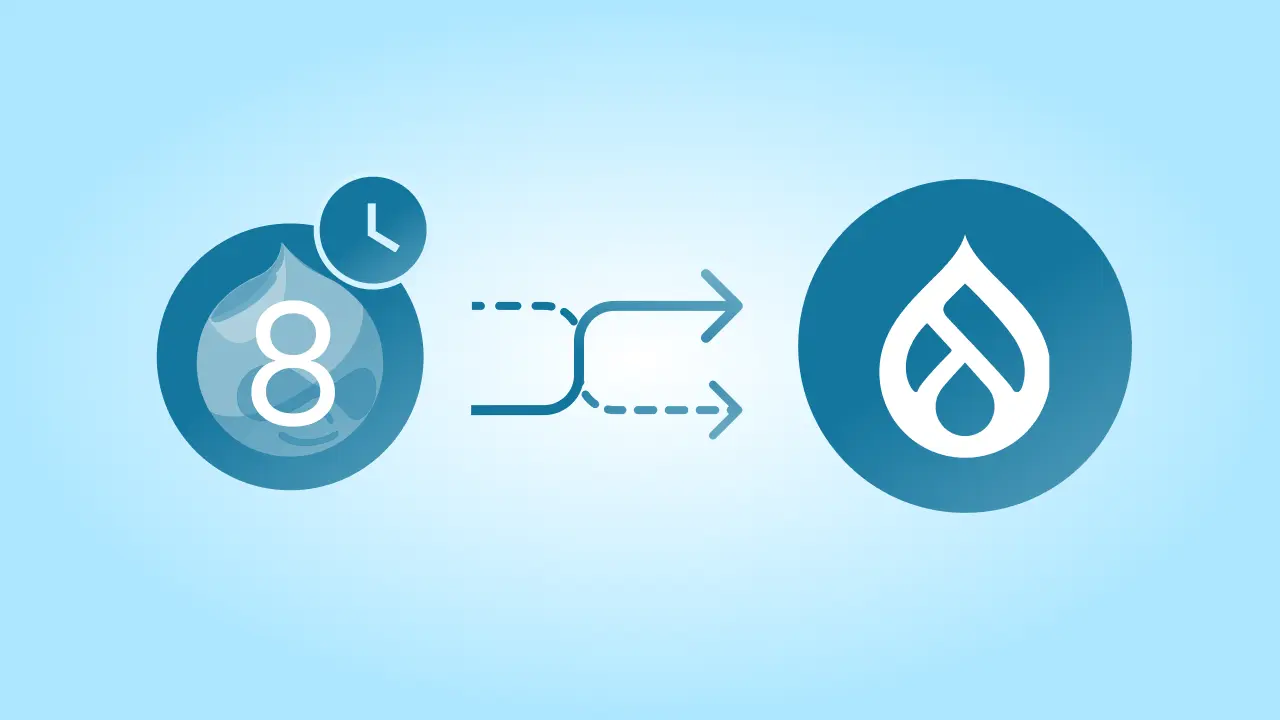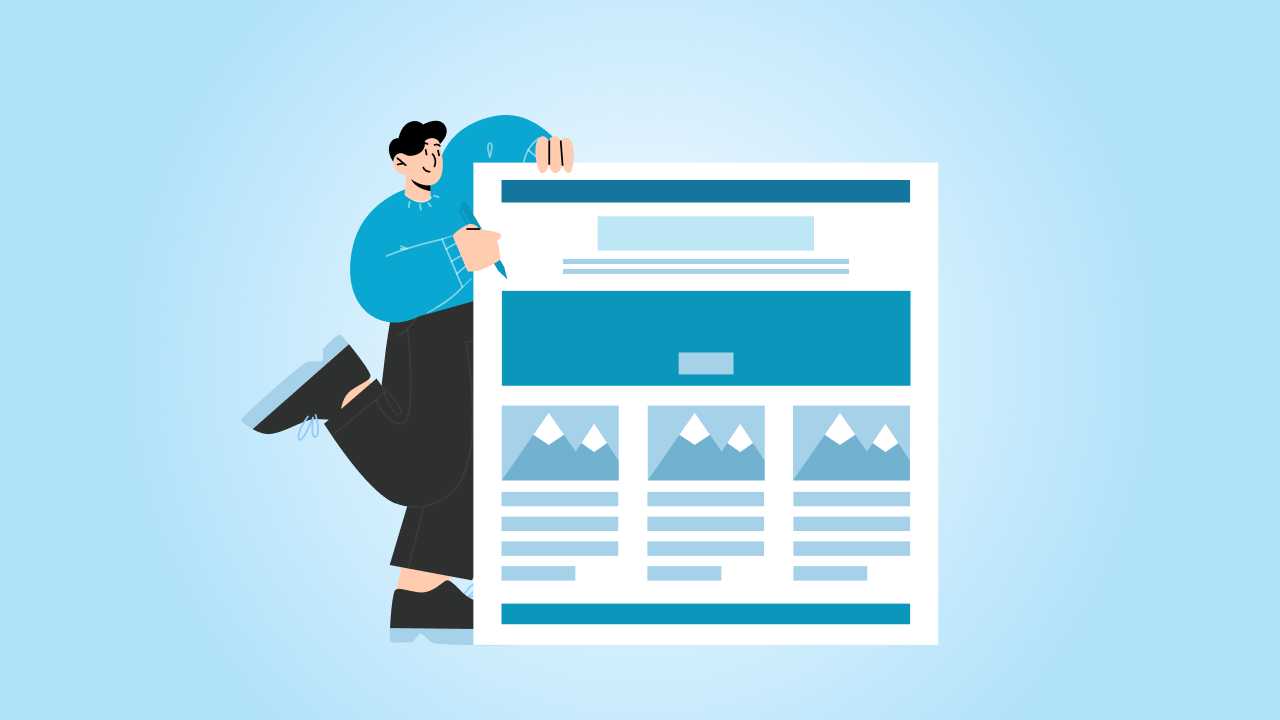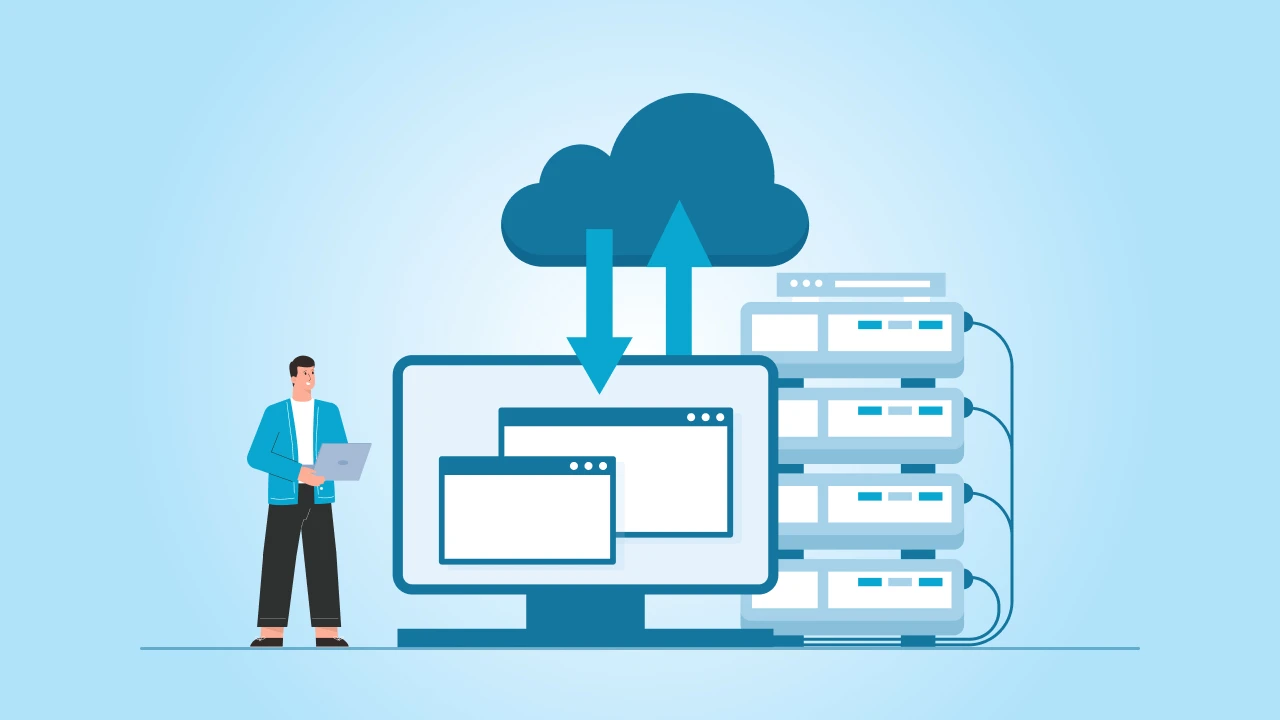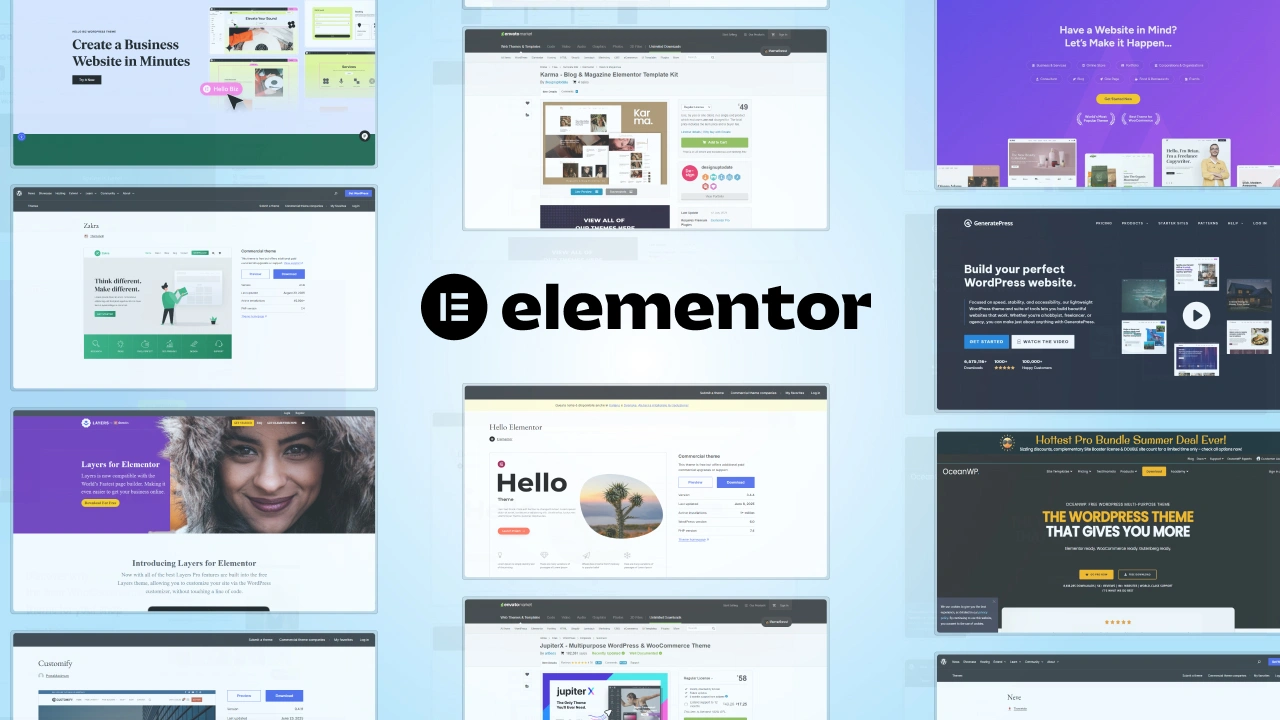When Drupal 8 reached its End of Life (EOL) on November 2, 2021, it marked the end of official support for this popular version of the CMS.
What does that mean?
In simple terms, Drupal 8 no longer receives updates, whether for new features, bug fixes, or—most importantly—security patches.
So if your website is still running on Drupal 8, it’s like driving a car without insurance. Everything might seem fine now, but if something goes wrong— like a cyberattack or a system failure—you are definitely on your own to deal with the consequences.
Usually, hackers actively look for vulnerabilities in outdated platforms, and without official support, you are a much easier target.
The good thing is you can save yourself from such hackers. There are clear steps you can take to secure your website and ensure your business stays protected.
In this blog post, we will explore the risks of staying on Drupal 8 in detail and the solutions to safeguard your website in this post-EOL landscape.
The Security Risks of Staying on Drupal 8
When you say your website is still running on Drupal 8, the risks you are taking are not just technical—they could impact your business in serious ways. Here’s how and why:
1. No Security Updates
When Drupal 8 reached its End of Life, the team stopped providing security patches. This means if someone discovers a vulnerability in the software, no official fix will be released from the team.
Now, hackers are aware of this loophole and often target platforms that are no longer maintained in terms of security. A single unpatched vulnerability is enough to leave your website open to attacks, including malware, data theft, or defacement.
2. Incompatibility with Modern Standards
As technology continues to evolve, the tools and platforms we rely on are regularly updated to improve performance, functionality, and security. And, older versions of Drupal, such as Drupal 8 and Drupal 7, were not designed to keep up with the latest updates to PHP, web servers, and other dependencies.
Now, this can lead to unexpected errors, super slow performance, and, more importantly, an increased risk of security vulnerabilities, as older versions no longer receive security patches.
3. Compliance and Legal Risks
If your website handles sensitive user data such as credit card and debit card information of customers, it’s highly important to stay compliant with data privacy regulations like GDPR (General Data Protection Regulation) or CCPA (California Consumer Privacy Act).
So running a website on an unsupported platform can make meeting these compliance requirements quite a bit challenging, and as we said earlier, older software may not support the latest security standards.
A data breach from outdated software isn’t just about paying hefty fines—it can also take a serious toll on your reputation, and brand value, and make it hard for users to trust your business again.
4. Third-Party Modules Are Vulnerable Too
Many websites rely heavily on third-party Drupal modules for added functionality such as forms, galleries, or integrations with other tools.
Here’s the problem: when a module developer stops providing updates, any security flaws in that module are left wide open. Knowing this, hackers often target outdated modules as an easy way to break into websites.
Even if your Drupal 8 core system is relatively secure, a small vulnerable module can act as a potential backdoor, giving attackers access to your data or even control of your site.
5. Increased Costs Over Time
At first, sticking with Drupal 8 might seem like the easier or cheaper option, especially for small businesses. After all, why deal with the hassle of an upgrade if your site is working just fine, right?
But in reality, staying on an outdated platform often ends up costing you more—both in money and headaches—over time.
Without official support, any security issues or bugs on your site are entirely your responsibility to fix. That often means paying developers for emergency patches or custom solutions, which can be far more expensive than regular updates.
And if the worst happens—like a cyberattack—you could face unexpected costs for cleaning up malware, recovering lost data, or restoring a damaged website.
Then there’s the hidden cost of downtime. If your site breaks or becomes unreliable, it can hurt your business in ways you might not immediately see—like losing potential customers, frustrating existing ones, or damaging your brand’s reputation.
That is how delaying an upgrade tends to multiply problems. The longer you wait, the more technical debt your site accumulates, making future upgrades even more complicated and expensive. And, by the time you decide to migrate to a newer Drupal version, you might be facing a much bigger and costlier project than if you had upgraded earlier.
Don’t wait for vulnerabilities to put your website and business at risk. Let cmsMinds guide you through a seamless upgrade to Drupal 10.
Common Scenarios for Drupal 8 End of Life (EOL) Risks
Let’s look at a real-world scenario that illustrates the risks of staying on an unsupported system.
1. Real-world Cyberattacks on Unsupported Platforms
Hackers thrive on predictability, and EOL platforms provide exactly that. For example, when Microsoft ended support for Windows XP, countless businesses stuck with the outdated operating system. Cybercriminals quickly took advantage, exploiting unpatched vulnerabilities to launch massive ransomware attacks like WannaCry, which affected hospitals, businesses, and individuals worldwide.
Similarly, outdated CMS platforms like Drupal 7 and Drupal 8 are magnets for attacks because hackers know no fixes are coming to save the site. A small single vulnerability could easily allow them to deface your website, steal sensitive customer data, or even inject malware that spreads to your users.
2. Increasing Focus on Known Vulnerabilities
Once a platform reaches official EOL, its vulnerabilities are essentially public knowledge. Hackers will be on the lookout and actively monitor updates and changelogs from supported versions to identify security flaws that are likely present in older, unsupported versions.
📌 For example: If Drupal 9 gets a patch for a vulnerability, chances are attackers might assume that the same flaw exists in the Drupal 8 version. They can then develop automated tools to scan the web for websites that are running on Drupal 8 and launch attacks at once on all websites. It’s like leaving your front door wide open when burglars know your lock is broken—and no locksmith is coming.
3. The Cost of a Data Breach
A data breach caused by outdated software can have far-reaching consequences:
- Financial Costs: Recovery expenses can include hiring specialists to clean your website, restoring data, and implementing emergency patches. Fines for non-compliance with regulations like GDPR or CCPA can also add up quickly.
- Reputation Damage: When customers find out their personal data has been compromised, it can seriously erode trust in your brand. Some may leave for competitors, and rebuilding your reputation can take years.
- Legal Implications: If sensitive customer information is exposed, lawsuits and regulatory scrutiny are real possibilities, which can further strain your resources.
In short, running an unsupported platform like Drupal 8 is not just risky—it’s inviting actual trouble. Hackers are ready to exploit outdated systems, and the costs of dealing with a breach often far exceed the effort of upgrading to a newer version like Drupal 10.
Solutions to Mitigate Risks
Now that we have covered the risks of staying on Drupal 8 after its End of Life, let’s look at the solutions available to protect your website and business.
Honestly, it’s always best to upgrade to a supported version, but then again, there are also temporary measures you can take to buy some time and reduce risks.
1. Upgrade to a Supported Version
The most effective and long-term solution is to upgrade to Drupal 10, which is the current and actively supported version of the platform.
- Improved Performance & Enhanced Security: The new version of Drupal comes with better features and performance improvements, making your website faster, more efficient, and, most importantly, more secure. By upgrading, you can be assured that your website is protected from the vulnerabilities that come with running outdated software.
- Future-Proofing: Upgrading to 10 isn’t just about getting updates today—it’s about positioning your website for the future. The newer versions are built to support the latest technologies, ensuring your website remains compatible with modern tools and security standards.
- Simpler Upgrade Path: If you are currently on Drupal 8, you are in luck! The upgrade path to Drupal 10 is relatively straightforward, as both versions share the same underlying architecture. This makes the transition easier and less time-consuming compared to older version upgrades.
2. Temporary Alternatives
If you are unable to upgrade immediately to Drupal 10 due to some reason, there aren’t any official extended support programs available for Drupal 8. However, you can take some temporary measures to maintain security and functionality until you are ready for the full upgrade.
- Custom Security Patches: Some Drupal development agencies may offer custom security patches for unsupported Drupal 8 sites, but this requires finding a trusted vendor who can create and maintain these fixes. It’s important to note that this is a short-term solution, as Drupal 8 will continue to receive no official updates. These custom patches can help address critical vulnerabilities, but they come with their own costs and risks.
- Stay Vigilant with Security Audits: Conducting regular Drupal security audits will help identify any potential vulnerabilities in your Drupal 8 site. This can help catch issues early and provide time to apply manual fixes or address problems before they become major security threats.
- Leverage Web Application Firewalls (WAFs): Adding an additional layer of protection with a Web Application Firewall (WAF) can help block common attack methods and protect your site from known vulnerabilities. While this isn’t a complete solution, it can mitigate the risks for a time.
Why Drupal 10 is the Best MoveKey Features of Drupal 10
- Modernized Backend: Drupal 10 has a revamped and more user-friendly backend that makes content management easier. It offers a streamlined administrative interface, enhanced accessibility, and improved workflows, making it easier and simpler for content creators and site administrators to manage their sites.
- Symfony 6: Drupal 10 is built on Symfony 6, a robust and modern PHP framework that ensures better performance, security, and maintainability. Symfony 6 is compatible with the latest web technologies, which means your website will stay on the cutting edge and be more scalable in the long run.
- CKEditor 5: The upgrade to CKEditor 5 brings a more powerful and intuitive WYSIWYG (What You See Is What You Get) editor. This makes it easier for content creators to manage and format content with rich text and media, without needing technical expertise.
- Decoupled Architecture Support: Drupal 10 offers enhanced decoupled architecture (or headless CMS) support. This allows your website’s content to be delivered via APIs to various front-end frameworks, mobile apps, and other platforms. With the flexibility of a decoupled architecture, you can easily adapt to new technologies, offer improved user experiences, and scale your website across multiple channels.
Long-Term Support Cycles Compared to Older Versions
One of the most important advantages of upgrading to Drupal 10 is its long-term support (LTS) cycle. Here’s how it compares to older versions like Drupal 8 or 9:
- Drupal 10: As the most recent version, it comes with an extended support cycle, ensuring that you’ll receive regular updates, security patches, and bug fixes for several years to come.
- Drupal 8: Reached its End of Life in November 2021, meaning no official updates or security patches are provided.
- Drupal 9: Reached its End of Life in November 2023, so it’s not a safe long-term solution either.
By moving to Drupal 10 now, you are future-proofing your site and ensuring that it remains secure, supported, and capable of leveraging the latest features for years to come.
Conclusion
The End of Life for Drupal 8 or any other version isn’t just a milestone—it’s a wake-up call for website owners to prioritize security and future readiness. Staying on an unsupported version might seem convenient at first, but the risks far outweigh the benefits. So upgrading to Drupal 10 isn’t just about keeping your site secure; it’s an opportunity to unlock modern features, improved performance, and long-term stability.
Our team of experts at cmsMinds specializes in smooth Drupal upgrades and custom solutions.





